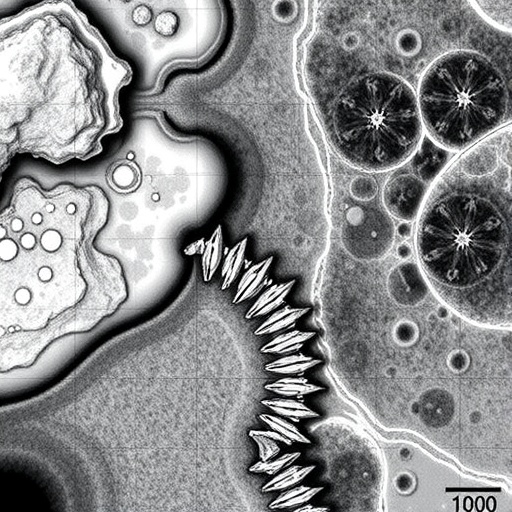In recent years, the global landscape of drug use has undergone significant transformations, driven by shifts in social attitudes, legal frameworks, and the emergence of novel psychoactive substances. Among the substances that have captured widespread attention are cannabis and synthetic cannabinoids. Although both categories engage similar receptor systems in the brain, their patterns of use, underlying motivations, and social contexts differ markedly. A groundbreaking study relying on comprehensive data from the European Web Survey on Drugs has illuminated these distinctions with unprecedented clarity, offering valuable insights into why people turn to cannabis or synthetic cannabinoids and what functions these substances serve in users’ lives.
The investigation into the divergent motives behind cannabis and synthetic cannabinoid consumption carries substantial importance. Traditional cannabis, derived from the Cannabis sativa plant, has a well-documented history of both recreational and medicinal applications. In contrast, synthetic cannabinoids, laboratory-engineered chemicals designed to mimic the psychoactive effects of delta-9-tetrahydrocannabinol (THC), have surged in availability, particularly in settings where cannabis remains illegal or heavily restricted. The pharmacological complexity, unpredictable potency, and associated health risks of synthetic cannabinoids have raised alarms globally, underscoring the need to understand user behavior concerning these substances.
Data analyzed in this study stem from a large-scale, cross-sectional European web-based survey that gathered extensive user-reported information on substance use patterns, motivations, and associated contextual factors. The innovative methodology capitalized on the accessibility and anonymity of online data collection to capture a broad and diverse demographic, overcoming conventional barriers present in traditional survey methods. This approach facilitated a nuanced comparison between users of natural cannabis and synthetic cannabinoids across multiple European regions, freshening discourse with empirical rigor absent in many prior investigations.
.adsslot_Jf9xD8mNHA{ width:728px !important; height:90px !important; }
@media (max-width:1199px) { .adsslot_Jf9xD8mNHA{ width:468px !important; height:60px !important; } }
@media (max-width:767px) { .adsslot_Jf9xD8mNHA{ width:320px !important; height:50px !important; } }
ADVERTISEMENT
One of the pivotal revelations of the research centers around the distinct functional motives governing the use of cannabis versus synthetic cannabinoids. Cannabis users typically report motivations linked to relaxation, socialization, pain relief, and anxiety management. These functional motives highlight the drug’s integration into lifestyle and coping mechanisms, often embedded within community and cultural practices. Conversely, synthetic cannabinoid users more frequently cite motivations associated with accessibility, avoidance of drug detection in standard screening protocols, and experimentation driven by curiosity or novelty-seeking tendencies—factors reflecting both circumstantial and situational pressures rather than long-term habitual patterns.
The neurochemical mechanisms underpinning these divergent use motives merit attention. Both cannabis and synthetic cannabinoids act primarily on the endocannabinoid system, engaging cannabinoid receptors CB1 and CB2. However, synthetic cannabinoids exhibit a broader spectrum of receptor affinities and often act as full agonists rather than partial agonists like THC. This increased receptor activation intensity results in a range of potent, sometimes unpredictable psychoactive effects, which may contribute both to the appeal and the risks recognized by users. The differences in receptor binding profiles elucidate why synthetic cannabinoids might be preferred in contexts where users seek stronger or distinct outcomes unavailable through natural cannabis.
Beyond pharmacodynamics, the legal and social environments surrounding these substances influence usage patterns dramatically. In several jurisdictions, the legal status of cannabis is evolving toward decriminalization or regulated medical and recreational frameworks, rendering its consumption less stigmatized and more accessible. This legal acceptance facilitates using cannabis for self-medication and social bonding. Synthetic cannabinoids, on the other hand, often exist within gray markets or illegal sectors where they may be sold as “legal highs” or herbal smoking blends, making them attractive to individuals seeking discreet or undetectable intoxication, particularly in employment or legal contexts where drug testing is prevalent.
Further insight emerges when exploring demographic profiles and psychosocial variables correlated with the use of these substances. Cannabis users tend to be more heterogeneous in terms of age, social status, and psychological wellbeing, reflecting the drug’s broader cultural entrenchment. Synthetic cannabinoid users, however, more frequently belong to vulnerable groups, including younger individuals, those with limited socioeconomic resources, or people facing legal and social marginalization. These demographic distinctions echo the functional motives discovered, implying that patterns of use are deeply embedded in broader social determinants and access constraints, not merely pharmacological preference.
The health implications outlined by the study highlight critical areas for public health interventions. While cannabis use carries its own set of risks, including dependency, cognitive impairment, and mental health concerns, its relatively stable safety profile underpins its widespread acceptance and medical use. Synthetic cannabinoids, conversely, are associated with acute toxicity, including severe psychosis, cardiovascular events, and fatalities, often linked to dosing variability and adulteration. Understanding the motivations for use is essential to tailor harm reduction strategies, focusing on education, risk awareness, and alternative coping mechanisms, especially for synthetic cannabinoid users who may be more exposed to adverse effects.
The survey data also unveil how users’ social environments and perceptions of peer use influence their choices. Cannabis users frequently report social facilitation as a motivator, framing consumption as a communal or relaxing activity. Synthetic cannabinoid use tends to be less socially oriented, with many users engaging in solitary consumption due to stigma or secretive procurement channels. This dynamic not only captures the contrasting sociocultural narratives but also underscores how normalization or criminalization shapes drug scenes and user identities across Europe.
An often overlooked but critical factor that the study highlights is the role of drug market dynamics in shaping user behavior. The availability, price fluctuations, and perceived reliability of supply sources affect decisions between cannabis and synthetic cannabinoid use. Synthetic cannabinoids can occasionally appear as “legal” alternatives when cannabis is difficult to obtain or considered too risky due to law enforcement scrutiny. Fast-changing legal classifications and the rapid development of novel synthetic compounds contribute to a constantly shifting market that challenges regulatory frameworks and health professionals alike.
In addition to external influences, individual psychological factors such as sensation seeking, impulsivity, and mental health status figure prominently in differentiating users. Cannabis users vary widely, with many employing the drug for anxiety reduction or mood enhancement. Synthetic cannabinoid users disproportionately exhibit characteristics linked to higher risk behavior, including polysubstance use and underlying psychological distress, which can exacerbate vulnerability to harmful outcomes. The intersection of mental health and drug use functions as a critical lens for interpreting these motivational discrepancies and designing effective therapeutic interventions.
The study’s findings have significant implications for policy makers tasked with balancing control and harm reduction. Blanket prohibition strategies may inadvertently drive some users toward higher-risk synthetic cannabinoids by limiting access to cannabis. Conversely, regulatory frameworks that permit safe and controlled cannabis markets may reduce demand for synthetic alternatives. This research underscores the complexity of drug policy environments and the necessity for differentiated approaches recognizing the heterogeneous motives driving substance use rather than applying one-size-fits-all solutions.
A particularly compelling aspect revealed by the research is the potential for misinformed or coerced choice in substance use, especially concerning synthetic cannabinoids. Users may start with synthetic cannabinoids unaware of the heightened risks or as substitutes due to unavoidable circumstances, such as employment drug testing. This finding points to an urgent need for improved education campaigns that transparently address risks and inform users about safer alternatives, medical endpoints, and available support systems, which could mitigate dangerous trajectories involving synthetic cannabinoids.
Moreover, the cross-European scope of the survey enhances the generalizability of the findings by encompassing a spectrum of cultural, economic, and regulatory milieus. This broad perspective highlights that despite regional differences, consistent patterns in functional motives emerge, suggesting underlying universal behavioral drivers. Such insights pave the way for multinational collaborative public health strategies and research agendas designed to address evolving drug landscapes globally.
The research also contributes to the ongoing scientific discourse regarding the classification of synthetic cannabinoids as NPS (novel psychoactive substances). Their unique properties and user profile distinguish them from traditional recreational drugs, necessitating particular attention from neuroscientists, pharmacologists, and clinicians. Future investigations spurred by these findings will likely delve deeper into the neurobiological mechanisms, long-term impacts, and optimal clinical responses tailored for synthetic cannabinoid use disorders.
In sum, this landmark study sheds critical light on the complex interplay of reasons that shape cannabis and synthetic cannabinoid use across Europe. By dissecting functional motives, demographic factors, pharmacological profiles, and contextual influences, the research offers comprehensive evidence that informs public health initiatives, regulatory decisions, and clinical interventions. As the drug landscape continues to evolve, such empirically grounded understanding is indispensable for crafting effective responses to emerging challenges, ultimately supporting the welfare and safety of diverse user populations.
Subject of Research: Functional motives and usage patterns of cannabis and synthetic cannabinoids among European users based on survey data.
Article Title: Cannabis and Synthetic Cannabinoids Are Used for Different Reasons: Comparing Functional Motives of Use Based on the European Web Survey on Drugs
Article References:
Péterfi, A., Urbán, R., Matias, J. et al. Cannabis and Synthetic Cannabinoids Are Used for Different Reasons: Comparing Functional Motives of Use Based on the European Web Survey on Drugs. International Journal of Mental Health and Addiction (2025). https://doi.org/10.1007/s11469-025-01513-2
Image Credits: AI Generated
Tags: cannabis sativa applicationscannabis use motivationseffects of synthetic cannabinoidsEuropean drug survey findingsglobal drug use changeslegal frameworks and drug usenovel psychoactive substancespsychoactive substance trendsrecreational vs medicinal cannabissocietal attitudes towards cannabissynthetic cannabinoid consumption patternsuser behavior and health risks





